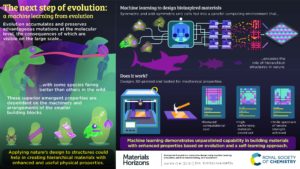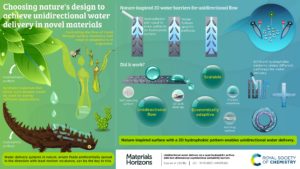General information
The purpose of the Community Board for both Materials Horizons and Nanoscale Horizons is to provide a channel for communication between the materials and nanoscience student and early career researcher community and the journals’ Executive Editor and Editorial Boards, and also to facilitate student and postdoctoral (or equivalent) engagement with Materials Horizons and Nanoscale Horizons. We are looking for engaged and interested early career researchers who will see this as an opportunity to assist in the development of an innovative journal, from a learned society publisher, in rapidly expanding areas of science. We are inviting nominations for both journals at this time, please do feel free to state a preference of journal in your nomination, however this is not mandatory and each nomination will be assessed for suitability for both Materials Horizons and Nanoscale Horizons Community Boards.
Guidelines for Nominators
We are inviting nominations for both journals at this time, please do feel free to state a preference of journal in your nomination, however this is not mandatory and each nomination will be assessed for suitability for both Materials Horizons and Nanoscale Horizons Community Boards.
- Any Principle Investigator can nominate someone for the Community Board of either Materials Horizons or Nanoscale Horizons. Candidates must not nominate themselves.
- Nominations are open to PhD candidates and active researchers who received their PhD (or equivalent degree, if applicable) no more than eight years prior to 1 November 2019. Appropriate consideration will be given to candidates from all research backgrounds (academic or industrial) and to those who have taken a career break or followed a different study path.
To make a nomination please provide the information outlined below to materialshorizons-rsc@rsc.org.
- The nominator’s name, affiliation, position and contact details
- The candidate’s name, affiliation, research group, position and contact details
- A supporting statement from the nominator (no more than 750 words) addressing the selection criteria (see below)
- A short personal statement from the candidate describing what they will bring to the role in terms of advising and being an advocate for the journal. This must be no longer than 250 words.
- An up-to-date CV for the candidate, including publication history (if any)
Selection criteria for Materials Horizons and Nanoscale Horizons Community Boards
The Executive Editor and members of the Editorial Boards will consider the following aspects of all nominations for the Community Boards as appropriate:
- Impact of research
- Quality of publications and/or patents and/or software
- Profile within institute and/or community
- Service to the community
Materials and Nanoscale Horizons Community Board_FAQs
The deadline for submission of nominations is 27th January, 2020.
For more information about the journal and for a list of current Community Board members, please visit the journal webpage at: rsc.li/materials-horizons





















